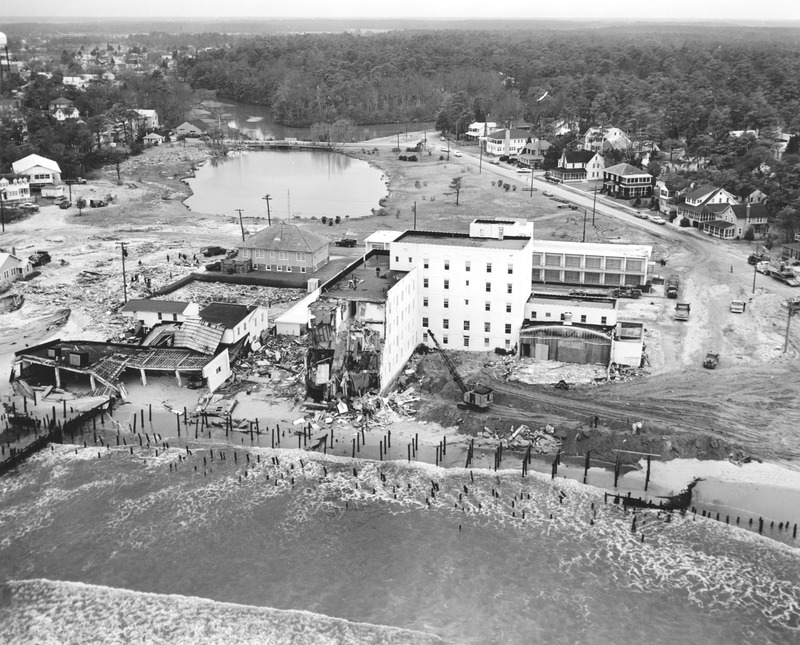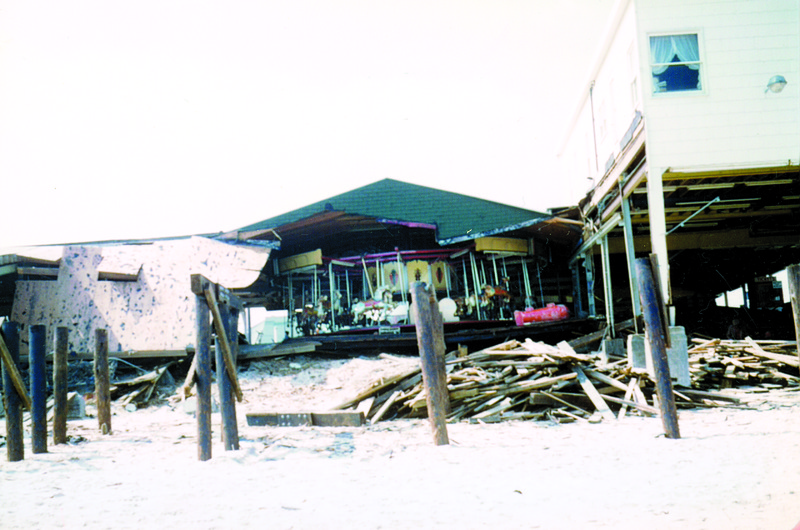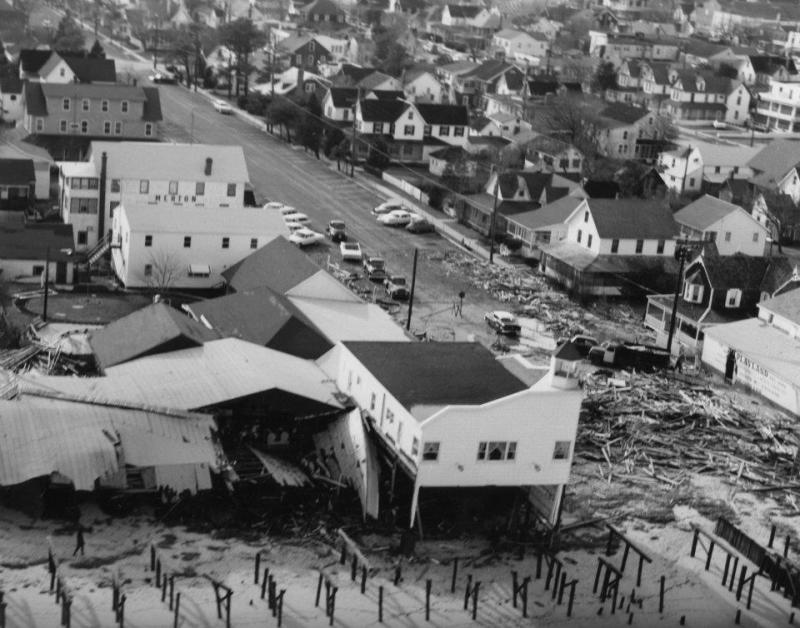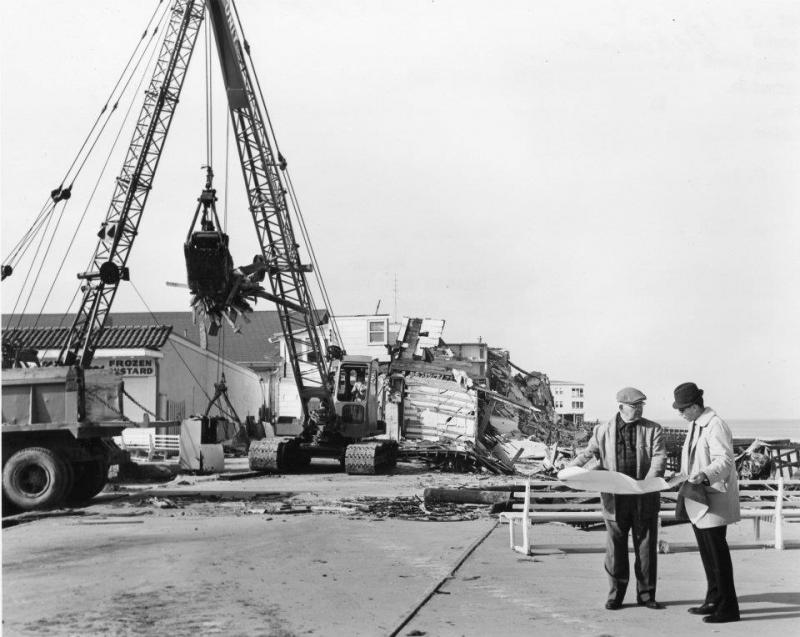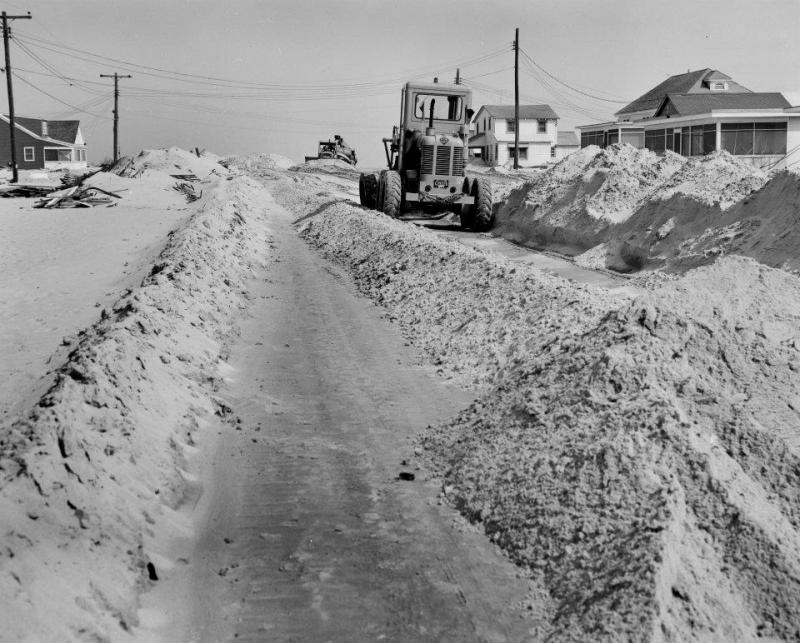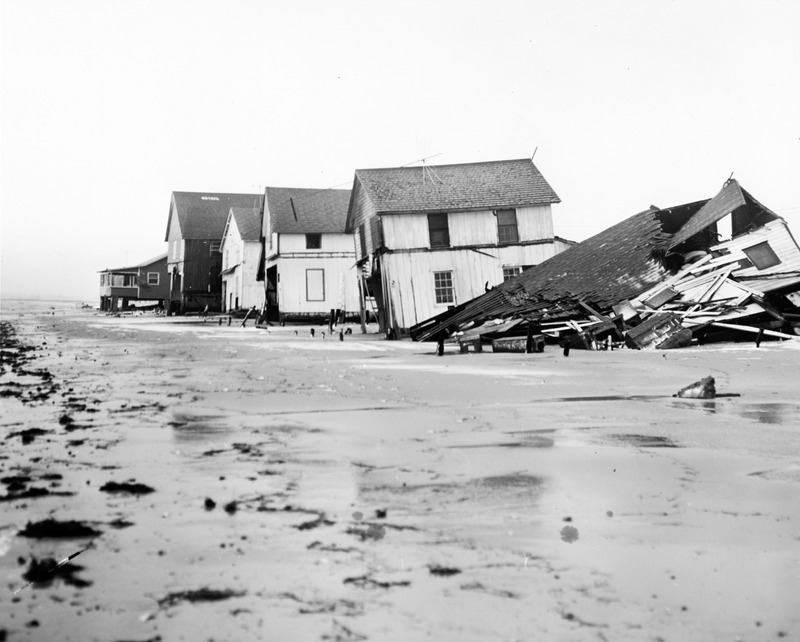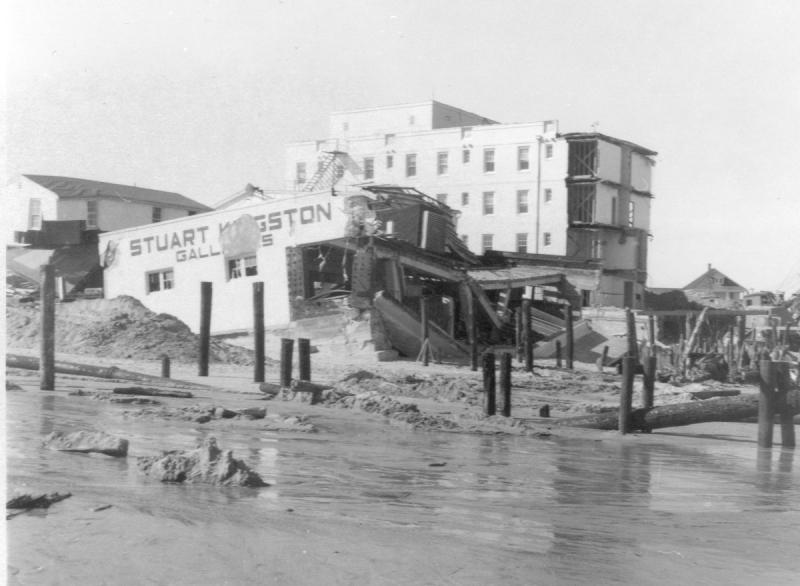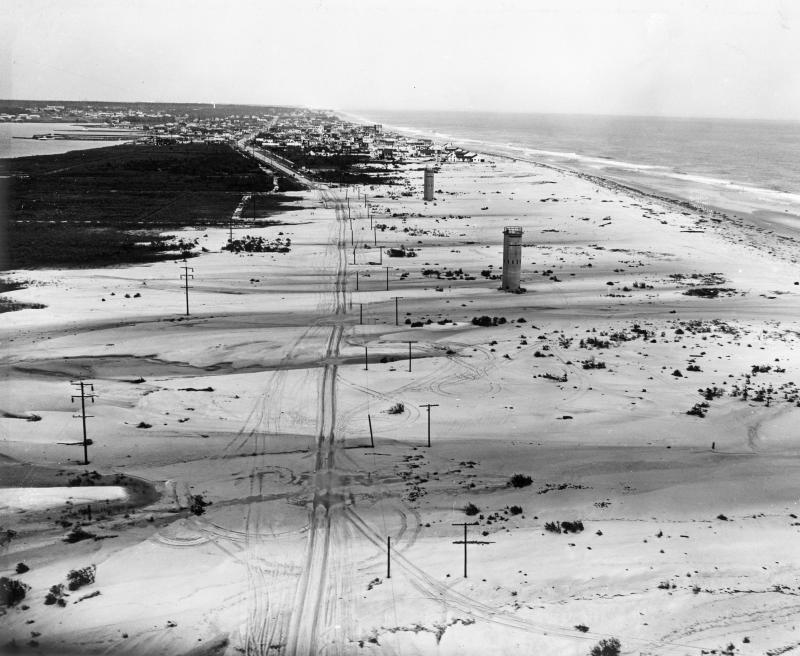The Storm of ‘62 is one of the most destructive weather events in history to hit the Mid-Atlantic region. The powerful nor’easter caught everyone – including the National Weather Service – off guard as it pummeled the Delaware coast for three days, March 6-8, with five record high tides, winds up to 70 miles per hour, rain and 20-foot waves along the Atlantic coast, and 40-foot waves offshore. Nearly 2,000 homes were destroyed from Rehoboth Beach to Fenwick Island, and damage was estimated at $50 million, which is about $450 million in today’s dollars. Seven lives were lost in Delaware due to flooding, including six children from one family in Bowers Beach, and three were lost in Maryland.
Many of the structures and houses, and most of the Boardwalk, were either damaged or destroyed along Rehoboth Beach. The same fate hit Dewey Beach, with houses and structures knocked down and moved off their foundations as the ocean and Rehoboth Bay met. Most of Route 14 (now Route 1) from Rehoboth Beach to Fenwick Island was closed because of deep sand washed in from the ocean. All of the bays along the coast flooded as record or near-record high tides were recorded. The highest tide in Lewes was 9.3 feet above normal.
It’s estimated that more than 2 million cubic yards of sand washed off the coastline beaches.
During a 50th anniversary seminar on the storm, officials noted that in the 1960s, 50 percent of the available construction parcels along the coastline were vacant; today it's less than 2 percent. Today, 50 percent of the nation's population lives along the coastlines. Sixty years ago, none of the strict coastal building codes in place today existed. National flood insurance was not offered throughout Sussex County until 1976. Federal-state funded beach nourishment projects did not begin until 2005.


